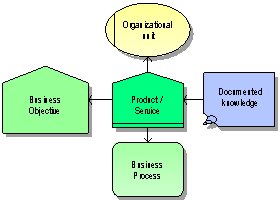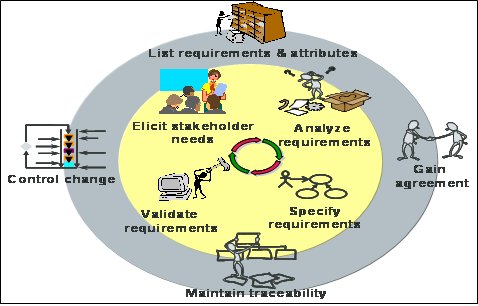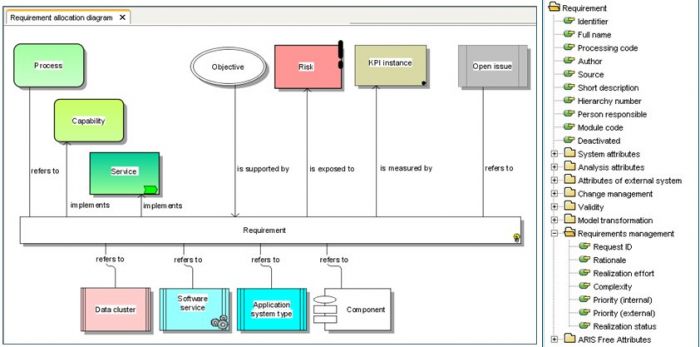
Products Requirements Management
New product development and introduction (NPDI) is probably the most important process for many companies. NPDI is responsible for the revenues and margins that a company can achieve.
Product Management involves driving product strategy and vision through the creation of product roadmaps that are coupled with customers, business drivers, technology capability, cost benefit analysis based on factual data, key performance indicators, goals and objectives definition.
Products and services are considered as main process driver and actual reason for turnover, costs and profit. Therefore, the investigation of the offered products and services to external clients is a fundamental step for BPM. Products or services can be described in various abstraction levels. (e.g. product segment (line of business), product group, product type,…)
The following figure gives an overview of the Product Repository Live Cycle:
Figure; Product Repository Life Cycle
The 5 steps which are enclosed within the Product Repository Live Cycle are :
- Product managers perform customer & competitive research and monitor product performance
- Product managers collect competitive, financial and market data
- Product managers develop a product portfolio strategy and logistical vision / goals
- Product managers review execution of product management and product analysis
- Product managers publish product information in the repository for review by users & customers
Products / services can be structured from top-down perspective. It is useful to create a product and service model which represents the entire product/service portfolio. The high level overview of the products offered by the different locations will be the starting point to align products and services.
Figure; Product / service management
For each product the required business processes, objectives, knowledge, processes and KPI’s can be determined. The KPI’s can be reported through the BPM performance dashboard reports.
The analysis of which products are sold within which location / division will give an overview of the actual utilization of the products throughout the organisation.
Business Requirements Management
Business Requirements Management is the process of eliciting, analyzing, prioritizing, documenting and agreeing on requirements and controlling the change and communication to the stakeholders.
Business Requirements describe in business terms what must be delivered or accomplished. Product requirements describe the product. Process Requirements describe the related processes the organization must follow and the constraints that they must obey.
The justification for Business Requirements Management is to assure the organization meets the expectations of its customers and internal or external stakeholders.
Figure; Business requirements management cycle
The Business requirements development process typically consists of four incremental steps (inner circle):
1 Eliciting is the collection of the business requirements from the various sources including documents and stakeholders
2 Analyzing is the negotiation and determination of what the requirements actually mean and which stakeholders requirements take priority.
3 Specifying is the documentation and organizing of the business requirements
4 Validation is the confirmation and sign-off from the stakeholders that these are the requirements they want to be adressed in this project
The Requirements Management process (outer circle) contains steps to keep track of the list of requirements, to gain agreement of the requirements to be realized within a project (iteration), to maintain traceability between requirements, related specifications and designs and to control change (e.g. due to ‘advanced understanding’).
Figure; Requirements allocation diagram
In the BPM platform the requirements may be related to many characteristics to enable accurate impact analysis. A configurable number of different requirements guarantee efficient traceability.
The advantages of using BPM for business requirements management are:
- Business requirements information for all stakeholders in one integrated environment
- Search, query and reporting facilities to quickly retrieve requirements and related information
- Requirement relations and attributes enable accurate impact analysis and efficient traceability
- Adequate authorization, versioning and base lining using standard BPM change management
- Flexibility in requirements lifecycle definition, process and attributes
More information can be found at:http://www.lulu.com/shop/frank-luyckx/enterprise-bpm-roadmap-assessments/paperback/product-20265487.html
Thanks for the article, we also make use of the requirements object but I'm curious why the Requirements allocation diagram does not allow one to associate a requirement with the screen object? In a BPM environement screens play a vital role and countles request for changes (requirements) are related to screens?


.jpg)
















